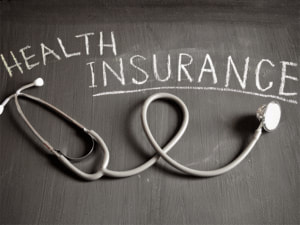|
Insurance inflation in South Africa. How quickly are insurance premiums rising?
Date: 8 October 2018 Category: Economics |
Related Topics |
|
We take a look at the rate of inflation of the various types of insurance in South Africa, which includes insurance connected to the dwelling (building insurance), health insurance or better known in South Africa as medical aids and then insurance connected to transport, also known as vehicle/car insurance.
So which of these insurance types have the highest levels of inflation? We take a look below. |
Insurance costs connected to health outpacing other insurance types
The line chart below shows the inflation rate of Building, Health and Vehicle insurance from December 2016. December 2016 =100, thus any value reported above 100 shows a price increase, while a value below 100 shows a price decrease.
So what the graphic above is showing that since December 2016 the various insurance types experienced the following levels of inflation:
Clearly increased competition for clients in the vehicle insurance space has kept price increases to a minimum, with the average level of insurance premiums of vehicles only increasing by 4.8% over the last 21 months. This rate is a lot less than the official inflation rate. Entrants such as King Price and Outsurance with their offer of R400 if current insurance premiums cannot be beaten all ensuring minimal price increases in vehicle insurance premiums. At least consumers can celebrate that, as fuel costs continue to reach new highs. Similarly building insurance has shown very low level increases with it increasing by only 5.8% over the last 20 odd months or so.
But before we as South Africans celebrate the fact that insurance premiums have not gone up to much, the elephant in the room needs to be addressed. Over the last 20 odd months, health insurance premiums/medical aid costs have gone up a eye watering 20%. That is a substantial amount. Especially considering the amount of money already spent by consumers on medical aids.
According to Statistics South Africa's Consumer Price Index (CPI) division, South Africans spend R7.52 out of every R100 on health insurance/medical aid. And a 20% increase in 20 odd months is bound to add more pressure to consumers as health insurance/medical aid costs is one of those items consumers would not like to cut back on, which means if the same health insurance is to be maintained, consumers will have to cut back somewhere else, and with petrol prices increasing, it puts even more pressure on consumers, who are likely to cut back on eating out and having drinks, which puts the Food and Beverages Sector under even more pressure in SA.
- Building insurance: 5.8%
- Vehicle/Car insurance: 4.8%
- Health insurance/Medical Aids: 19.6%
Clearly increased competition for clients in the vehicle insurance space has kept price increases to a minimum, with the average level of insurance premiums of vehicles only increasing by 4.8% over the last 21 months. This rate is a lot less than the official inflation rate. Entrants such as King Price and Outsurance with their offer of R400 if current insurance premiums cannot be beaten all ensuring minimal price increases in vehicle insurance premiums. At least consumers can celebrate that, as fuel costs continue to reach new highs. Similarly building insurance has shown very low level increases with it increasing by only 5.8% over the last 20 odd months or so.
But before we as South Africans celebrate the fact that insurance premiums have not gone up to much, the elephant in the room needs to be addressed. Over the last 20 odd months, health insurance premiums/medical aid costs have gone up a eye watering 20%. That is a substantial amount. Especially considering the amount of money already spent by consumers on medical aids.
According to Statistics South Africa's Consumer Price Index (CPI) division, South Africans spend R7.52 out of every R100 on health insurance/medical aid. And a 20% increase in 20 odd months is bound to add more pressure to consumers as health insurance/medical aid costs is one of those items consumers would not like to cut back on, which means if the same health insurance is to be maintained, consumers will have to cut back somewhere else, and with petrol prices increasing, it puts even more pressure on consumers, who are likely to cut back on eating out and having drinks, which puts the Food and Beverages Sector under even more pressure in SA.
